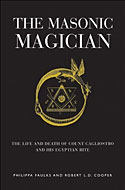Books
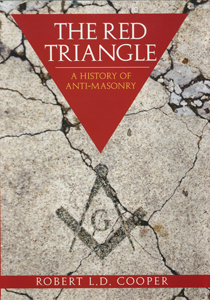 The Red Triangle – A brief history of Masonophobia
The Red Triangle – A brief history of Masonophobia
For at least 200 years Freemasonry has been subjected to witch-hunts. Conspiracy theories abound in which Freemasons manipulate whole governments, incite revolution, control the world banking system, and will engage in any activity, even murder, to advance their aims. Even today, Freemasonry is still seen a legitimate group to attack on the grounds of politics, religion and conspiracy theories. The Red Triangle uncovers the reality of this persecution of Freemasons from its first manifestation soon after people became aware of their existence in the 17th century. Taking a historical approach the author examines why attacks on Freemasonry began to appear from many quarters, who were involved? Why? What effect did their attacks have on all concerned and how successful were the Freemasons in their attempts to defend themselves. Attacks and persecution took place in many countries as Freemasonry spread around the world – there was even an anti-Masonic political party in 19th century America which stood against Masonic politicians. In complete contrast Freemasonry and the American civil war would provide a fascinating insight into the ethos of the Freemasonry in extreme, life threatening, situations when Freemasons offered assistance to their fellow Freemasons on opposite sides during the war in the midst of battles. This century ended with the notorious Dreyfus Affair which dragged Freemasonry into the political arena and most importantly linked Freemasonry with the Jews as world conspirators. The common fear of a New World Order by a Judeo/Masonic conspiracy was to reach a horrific culmination in Nazi Germany, in which Freemasons were actively persecuted, many dying in the Holocaust. Even after the war, Freemasons were seen by many as legitimate targets for persecution or abuse and today Freemasonry is still fighting a battle to present itself positively to the general public. The Red Triangle does not shrink in looking at controversial present-day issues and poses the final question: ‘What does the future hold for the Freemasons?
The Masonic Magician: The Life and Death of Count Cagliostro and His Egyptian Rite
“The Masonic Magician” tells Cagliostro’s extraordinary story, complete with the first English translation of his “Egyptian Rite of Freemasonry” ever published. The authors examine the case made against him, that he was an impostor as well as a heretic, and find that the Roman Church, and history itself, have done him a terrible injustice. This engaging account, drawing on remarkable new documentary evidence, shows that the man condemned was a genuine visionary and true champion of Freemasonry. His teachings have much to reveal to us today not just of the secrets of the movement, but of the mysterious hostility it continues to attract.
The chapter headings are:
There is a Facebook page dedicated to the book thanks to my co-author, Pip, for that!
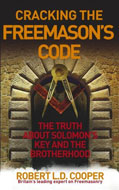 Cracking the Freemason’s Code:
Cracking the Freemason’s Code:
The Truth About Solomon’s Key and the Brotherhood
In “Cracking the Freemason’s Code”, Robert Cooper explains exactly who the Freemasons are and what they do. As the Curator of the Scottish Masonic Museum and Library, the author is in a unique position to reveal the secret history of this elect brotherhood. Prompted by growing public interest and provoked by the controversial stories that circulate about Freemasonry, this is the first time that he has chosen to do so. “Cracking the Freemason’s Code” is written with an insider’s knowledge and privileged access to archive material, including never-before published images. It lays bare the intriguing symbolism, beliefs and history of the Masons, and explains the structure of Freemasonry, its ethos and connections to other covert societies. It also discloses the identities of famous Masons and the locations of important Masonic sites. This is the book that answers once and for all any questions readers may have about what Freemasonry is and the role it has played in shaping our society.
The book is published in the USA by Simon and Schuster to go there click here or on the link below:
http://authors.simonandschuster.com/Robert-L-D-Cooper/44139457
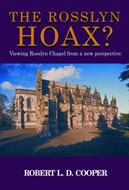 The Rosslyn Hoax?
The Rosslyn Hoax?
Would you like to know the truth about Rosslyn Chapel? Since the publication of the novel “The Da Vinci Code” huge numbers of non-Masons have been asking questions and putting forward theories about Freemasonry, especially Freemasonry in Scotland, and its alleged connections with the Knights Templar and Rosslyn Chapel. This book is a product of the research undertaken to answer those thousands of questions. The results will surprise a lot of people. The author asks:- Have we the public been the victims of a massive hoax? Is it true that Rosslyn Chapel has been changed to make it Masonic? Are the Freemasons themselves the victims of an enormous conspiracy? Has the meaning of the Kirkwall Scroll been hijacked for a particular purpose? Who benefits from trying to cover it all up? Robert L. D. Cooper is the Curator of the Grand Lodge of Scotland Museum and Library in Edinburgh and is in a privileged position to know from the inside the truth about all the various theories regarding Rosslyn Chapel, Freemasonry, the Knights Templar and the Sinclair family. For the first time a Freemason, pre-eminent in the field, speaks out.
At last Freemasons themselves are being asked about Freemasonry and this book provides the answers.
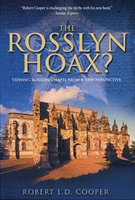 The Rosslyn Hoax?
The Rosslyn Hoax?
This best selling book is now available in paperback and contains a number of corrections and improvements. The index in particular is greatly improved with much more precise detail as to where to locate particular subjects, names and places.
For a paperback this is still a pretty hefty tomb and does not slip easily into a pocket. The author would probably argue that it is not intended to be a ‘carry – around’ guidebook of Rosslyn Chapel or any other place for that matter – it is simply a matter of packing the same amount of information into a small size package at a much reduced cost. The paperback is only £7.99 a price described as a bargain considering the sheer amount of information, detail and images that it contains. It is reported that because of the success of the paperback edition a second (paperback) edition is being considered with considerable enhancements.
The Genealogie of the Sainteclaires of Rosslyn
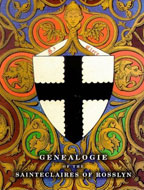 Of all the books that I have written or edited this is probably the most important. Between approximately 1690 and 1719 Father Richard Augustine Hay (1661 – c.1736), a Roman Catholic priest who’s mother had married into the Rosslyn family after she was widowed, undertook the enormous task of transcribing all the documents that were stored in Rosslyn Castle. He intermingled his transcriptions with the oral history and traditions of the St. Clairs of Rosslyn and fortunately indeed are we that he did so for all the documents (Charters, marriage contracts, land transactions etc.) have since disappeared. An abbreviated version of this book was published in 1835 by James Maidment but was limited to only 120 copies and so is extremely rare. Researchers wishing to obtain details about the St. Clair family since their arrival in Scotland in 1307 had no choice but to visit specialist libraries. In 2002 the Grand Lodge of Scotland took the bold decision to reprint Maidment’s book. Although I was the editor the outstanding feature of the book is that for the first time all the Latin documents were translated into modern English by Brother John Wade. At last people could judge for themselves if what numerous popular authors claimed the Latin Charters etc. said regarding the Knights Templar, Rosslyn Chapel and Freemasonry were in fact correct.
Of all the books that I have written or edited this is probably the most important. Between approximately 1690 and 1719 Father Richard Augustine Hay (1661 – c.1736), a Roman Catholic priest who’s mother had married into the Rosslyn family after she was widowed, undertook the enormous task of transcribing all the documents that were stored in Rosslyn Castle. He intermingled his transcriptions with the oral history and traditions of the St. Clairs of Rosslyn and fortunately indeed are we that he did so for all the documents (Charters, marriage contracts, land transactions etc.) have since disappeared. An abbreviated version of this book was published in 1835 by James Maidment but was limited to only 120 copies and so is extremely rare. Researchers wishing to obtain details about the St. Clair family since their arrival in Scotland in 1307 had no choice but to visit specialist libraries. In 2002 the Grand Lodge of Scotland took the bold decision to reprint Maidment’s book. Although I was the editor the outstanding feature of the book is that for the first time all the Latin documents were translated into modern English by Brother John Wade. At last people could judge for themselves if what numerous popular authors claimed the Latin Charters etc. said regarding the Knights Templar, Rosslyn Chapel and Freemasonry were in fact correct.
This is not a ‘bedtime reading book’ but it is considered essential for those interested in Rosslyn Chapel, the St. Clair family, Freemasonry, the Knights Templar and a host of other subjects that have become inter-connected due to the efforts of popular authors. The hardback edition of the book sold out very quickly and there are a limited number of paperback editions still available but probably not for long.
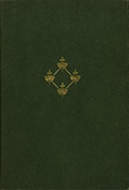 The Origins and History of the Order of Free Gardeners
The Origins and History of the Order of Free Gardeners
Freemasonry only had one serious competitor and that was from Free Gardenery. Both came from the same roots, the former from the trade of stonemasonry and the latter, that of gardening. It was anticipated that membership of Lodges would be drawn from men working in those trades. But from the outset Free Gardeners initiated men who were not gardeners and this was specifically catered for in their first written rules of the order. What attracted these gentlemen gardeners to seeks admission to a Lodge is not clear but perhaps the elaborate rituals, regalia and practical advice cannot be ruled out.
The parallels between Free Gardenery and Freemasonry were remarkably similar to Freemasonry in that both were created by operative Scottish gardeners and stonemasons respectively. A comparison between the two orders, their origins and development provides an unusual dimension for the study of both.
This book provides the reader a fantastic introduction to the fraternity of Free Gardeners outlining its history, showing its regalia and describing its degrees.
152 Pages
ISBN 978 0 85318 656 4
Highly Illustrated
Hardback
More to follow…
